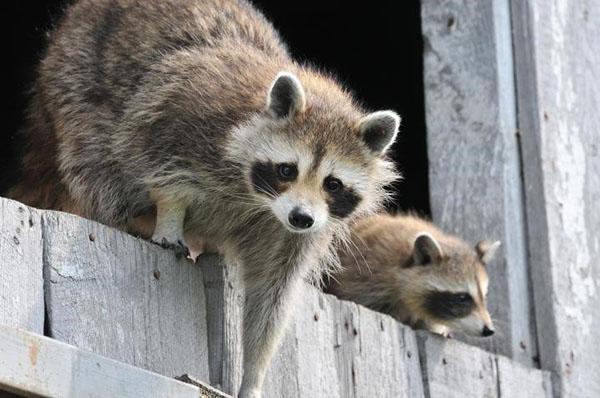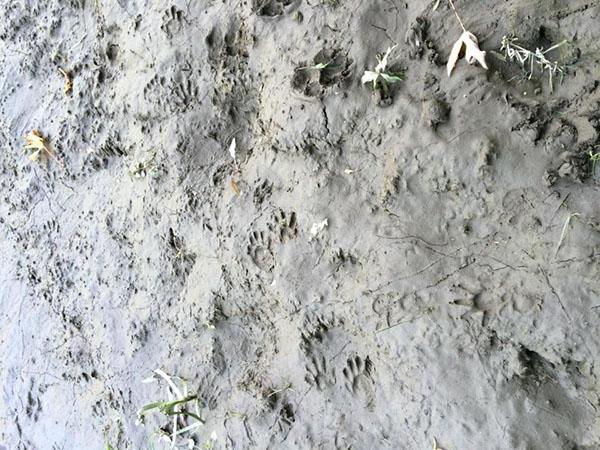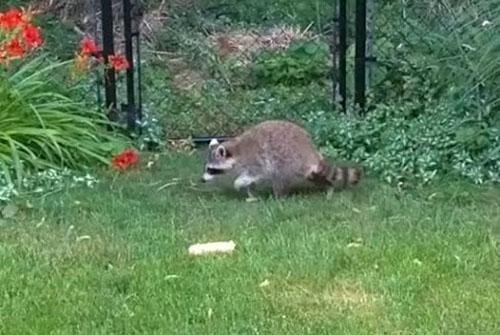How to deal with raccoons on the site
 In raccoons, the color of the muzzle under the eyes looks like a thief's mask, which fully reflects their habits. These resourceful animals are the second most persistent and resourceful, not counting the squirrel that steals food from the bird feeder.
In raccoons, the color of the muzzle under the eyes looks like a thief's mask, which fully reflects their habits. These resourceful animals are the second most persistent and resourceful, not counting the squirrel that steals food from the bird feeder.
Raccoons are great climbers, swimmers, jumpers and sprinters. Five-toed paws make them very agile, and their agility allows raccoons to bypass any human trap designed to scare away animals. If they were unable to get into your garden, then they can crawl into the chimney and use it as cover.
Raccoons do not hibernate, but they live in shelters during severe weather, as a result of which they lose a significant part of their weight during the winter months. In the warm part of the year, they live in tree hollows. Among raccoons, there are many young individuals who live in families throughout the year.
Despite the fact that raccoons prefer areas with forests and water sources, most of them find their food by terrorizing their summer cottages. They will be even happier if there is a small forest and a pond near your garden. These animals are omnivorous and can destroy all the plants that you have so painstakingly grown.
Read also the article: how to deal with moles at their summer cottage?
How to spot raccoons

Raccoons are nocturnal creatures, respectively, they go hunting in the dark. This can make it difficult to identify them, because you only find the harm they caused, not the culprits themselves. Searching for footprints around this area will allow you to understand who exactly visited your garden.
What do raccoons eat? These omnivorous hunters enjoy eating sweet corn, fruit trees, peas, potatoes, and caterpillars.
After a rainy night, it is easy to spot five-toed footprints in the mud around your property. These are raccoon paw prints that are easy to distinguish from most four-fingered footprints of other mammals.
Raccoon damage
 If you find many holes in your lawn or mulch coverings have been excavated, you may have a night visitor. Raccoons tear apart the ground and mulch in search of insects and worms that they feed on. They also empty bird feeders, so keep an eye out for any problems with a sudden loss of feed.
If you find many holes in your lawn or mulch coverings have been excavated, you may have a night visitor. Raccoons tear apart the ground and mulch in search of insects and worms that they feed on. They also empty bird feeders, so keep an eye out for any problems with a sudden loss of feed.
Of course, if you have corn growing, there is nothing more frustrating than finding broken stems with torn ears and half-eaten ears. Even more annoying is the fact that raccoons don't really like corn very much and often spoil it for nothing, they prefer sunflower seeds, dog food and sardines more.
How to deal with raccoons on the site
 The perseverance and multitude of raccoons gave rise to many ideas for countering pests. Below you will find tips from foreign farmers, one of them will definitely suit you.
The perseverance and multitude of raccoons gave rise to many ideas for countering pests. Below you will find tips from foreign farmers, one of them will definitely suit you.
If overnight visits are regular, you can set up traps for raccoons in the garden, catch and then release the animal 5 km from your site.Raccoons can eat almost anything, so dry cat fish food, chicken breasts, corn ears or whole peanuts can be used as bait.
Keeping a dog trained to “night shift” in the yard is also an effective way. On the one hand, it will help you save a lot of corn, but on the other hand, it will wake you up at night.
To keep raccoons at a distance, try scattering blood meal around the corn plantings and sprinkling the rest of the plants with wood ash.
Chop the garlic, mix it with the chili powder, and spread it around the garden at small intervals.
One farmer recommended hanging shoes and clothes that smell of human sweat in the garden or around the corn plot. Likewise, you can throw some dog hair or human hair around the garden.
Tune in the radio with rock music and leave it in the center of your yard or cornfield overnight. The noise will scare off the raccoons.
Install lighting in your garden. A flashlight sometimes makes raccoons flee.
Plant enough corn for both yourself and your prospect.
Place some stretchers with tin cans that will scare away animals with noise on contact. It is also believed that paper scattered around the perimeter of the garden helps against raccoons.
How to keep raccoons from entering your garden
Install a good fence, however, remember that raccoons are nimble and smart, so build an obstacle that can contain them. You may need to put up an electric fence, it is very effective. Run two wires, one 15 cm and the other 30 cm above the ground. That should be enough.
If your home is near a garden, remove all possible food sources from the yard, including dog food and bird seeds. Buy trash cans with resealable lids and keep all trash inside if possible. Keep doors closed during dusk and sunrise. Close the chimney and seal any holes or crevices in the attic and roof.
Grow tall varieties of corn, such as Silver Queen, Candy Corn and Lancelot. The ears of taller plants are taller, so raccoons have no leverage to knock over the stem and reach them. Animals prefer small varieties of corn.
You can plant squash around corn plots and other plants to keep raccoons away. They don't like to walk on thorny squash vine.